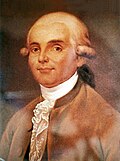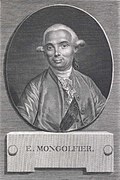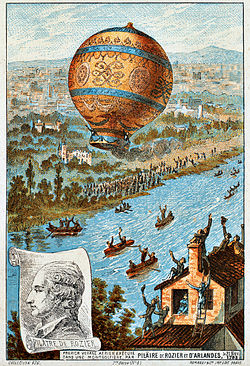AY Honors/Hot Air Balloons/Answer Key
1. State the role each of the following played in the development of flying balloons.
a. Joseph Michel Montgolfier and Jacques-Etienne Montgolfier
Joseph-Michel Montgolfier (26 August 1740 – 26 June 1810) and Jacques-Étienne Montgolfier (6 January 1745 – 2 August 1799) were the inventors of the montgolfière, or airship. The brothers succeeded in launching the first manned ascent, carrying a young physician and an audacious army officer into the sky.
Of the two brothers, it was Joseph who first contemplated building "machines". Joseph observed laundry drying over a fire incidentally form pockets that billowed upwards. Joseph set about building a box-like chamber 1 by 1 by 1.3 meters![]() out of very thin wood and covering the sides and top with lightweight taffeta cloth. Under the bottom of the box he crumpled and lit some paper. The contraption quickly lifted off its stand and collided with the ceiling. Joseph then recruited his brother to balloon building.
out of very thin wood and covering the sides and top with lightweight taffeta cloth. Under the bottom of the box he crumpled and lit some paper. The contraption quickly lifted off its stand and collided with the ceiling. Joseph then recruited his brother to balloon building.
The two brothers then set about building a contraption 3 times larger in scale (27 times larger in volume). The lifting force was so great that they lost control of their craft on its very first test flight on 14 December 1782. The device floated nearly 2 kilometres (about 1.2 mi). It was destroyed after landing by the "indiscretion" of passersby.
b. Jean Francois Pilatre de Rozier and Francois Laurent Marquis d'Arlandes.
Jean-François Pilâtre de Rozier (30 March 1754 – 15 June 1785) was a French chemistry and physics teacher, and one of the first pioneers of aviation. His balloon crashed near Wimereux in the Pas-de-Calais during an attempt to fly across the English Channel, and he and his companion, Pierre Romain, became the first known victims of an air crash.
In June 1783, he witnessed the first balloon flight of the Montgolfier brothers. On 19 September, he assisted with the untethered flight of a sheep, a cockerel and a duck from the front courtyard of the Palace of Versailles. After a variety of tests in October, he made the first manned free flight in history on 21 November 1783, accompanied by the ambitious Marquis d'Arlandes. During the 25-minute flight using a Montgolfier hot air balloon, they traveled 12 kilometres from the Château de la Muette to the Butte-aux-Cailles, then in the outskirts of Paris, attaining an altitude of 3,000 feet.
c. Jacques Alexandre Cesar Charles and Nicolas Louis Robert.
d. Ben L. Abruzzo, Maxie L. Anderson, and Larry Newman
e. Bertrand Piccard and Brian Jones
2. Cite the principle of Archimedes, and briefly describe how it applies to each of the following:
- Archimedes' Principle states: any body fully or partially submerged in a fluid is buoyed up by a force equal to the weight of the fluid displaced.
- a. A piece of cork floating in a bowl of water.
- b. A ship floating in the ocean
- c. A hot air balloon floating in the atmosphere
3. Using a textbook of Chemistry, or a reference book of scientific tables, draw up a simple table showing the composition of air by weight and by volume.
4. Draw up a simple table showing a comparison of the atomic number, atomic weight, and density of hydrogen, helium, nitrogen, and oxygen.
Hydrogen
Atomic Number: 1
Atomic Weight: 1.008
Density: 0.00008988 (g/cm³)
Helium
Atomic Number: 2
Atomic Weight: 4.003
Density: 0.0001785 (g/cm³)
Nitrogen
Atomic Number: 7
Atomic Weight: 14.01
Density: 0.0012506 (g/cm³)
Oxygen
Atomic Number: 8
Atomic Weight: 16.00
Density: 0.001429 (g/cm³)
5. Name two gases that are used in flying gas filled balloons.
6. Explain how heat/temperature affect the density of air, and how this applies to flying hot air balloons.
7. Explain the role of each of the following in the structure and flying of a hot air balloon.
- a. Envelope
- b. Support structure
- c. Throat
- d. Fuel source
8. Name two materials that may be used for the envelope of a hot air balloon, and compare the advantages each cords because of its properties.
9. Describe how flying balloons have served a useful function in
- a. Military campaigns
- b. Scientific research
10. At what time of the day do most sport balloon flights take place? Why?
11. Describe how a pilot controls the vertical movement of
- a. A hot air balloon
- b. A gas filled balloon



